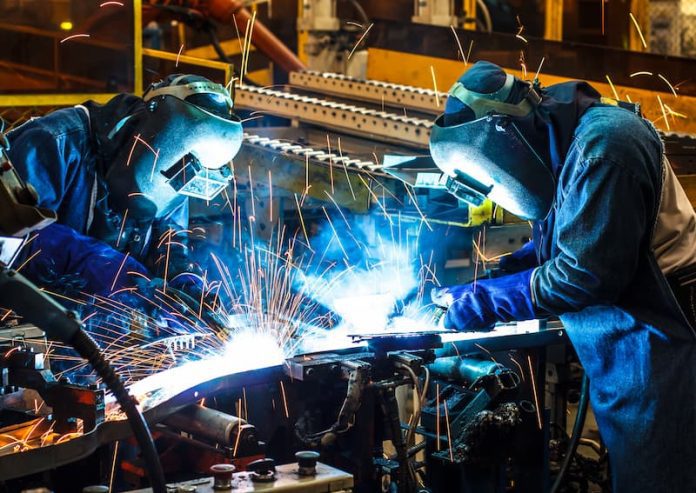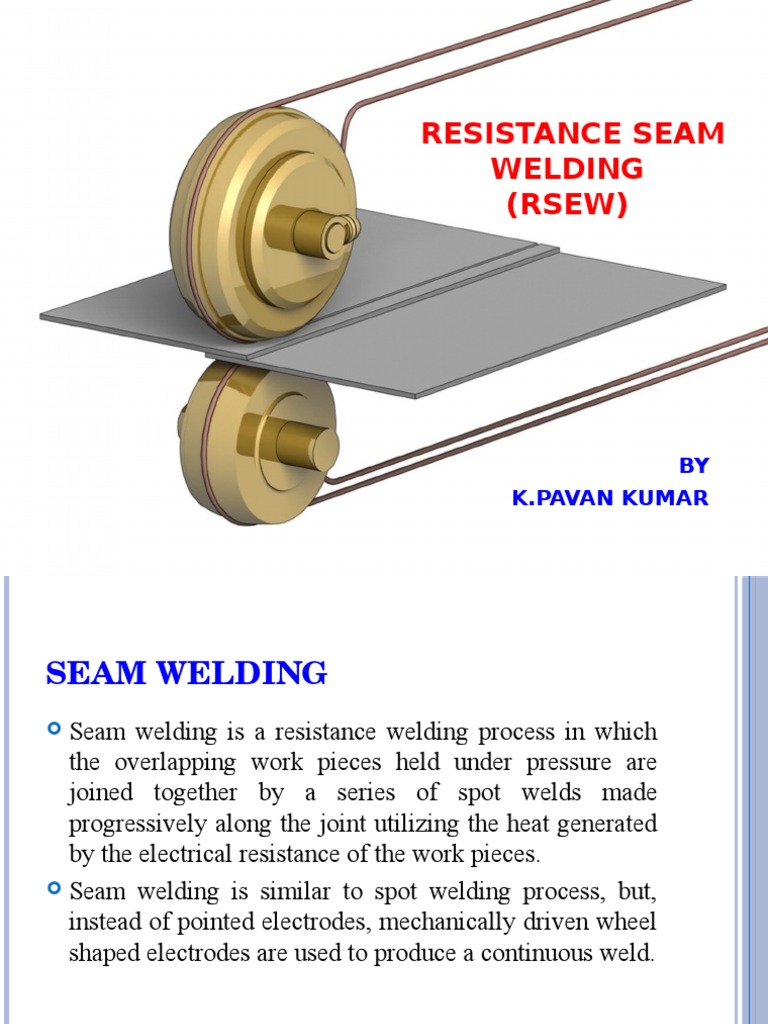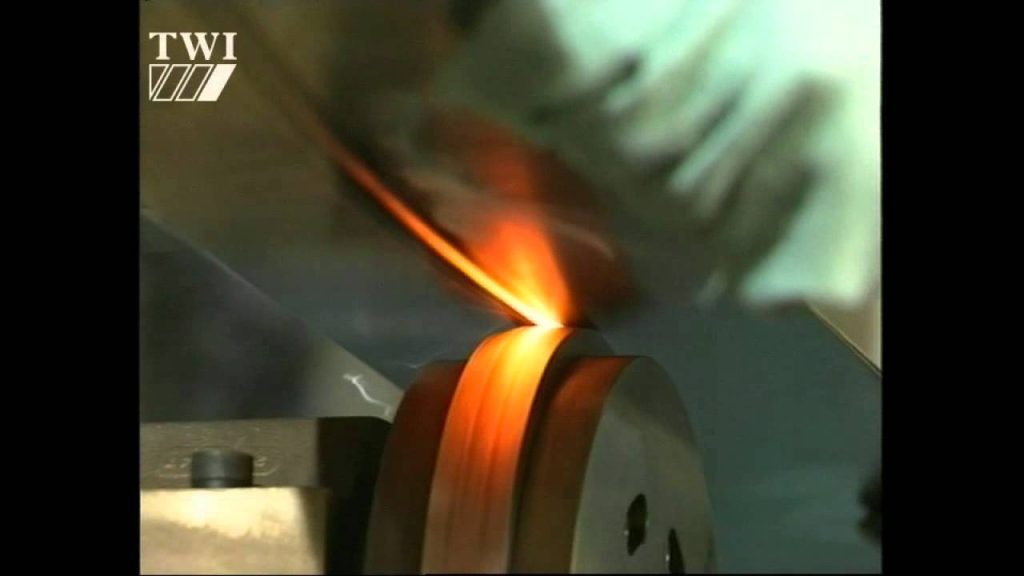Resistance seam welding is a fascinating technique that plays a crucial role in joining metal components securely. So, let’s take a closer look at how this innovative process works. By passing an electrical current through the overlapping metal sheets, resistance seam welding generates intense heat, causing the metal to melt and fuse together. This method ensures a strong and reliable bond while maintaining the structural integrity of the materials. Let’s explore the intricate workings of this remarkable welding technique and see how it has revolutionized various industries.
This image is property of 1.bp.blogspot.com.
Review contents
Introduction
Welcome to our comprehensive guide on resistance seam welding! In this article, we will explore the ins and outs of this welding process, including its definition, principles, equipment used, different types, advantages, applications, factors affecting its performance, as well as any challenges and limitations. Whether you’re new to the world of welding or seeking to expand your knowledge, we’ve got you covered. So, let’s dive right in!
What is Resistance Seam Welding?
Definition
Resistance seam welding is a specialized welding process that joins two or more metal pieces by applying heat and pressure. Unlike other welding methods, resistance seam welding uses the resistance of the metal itself to generate heat, allowing for a clean and efficient way to create strong, permanent bonds. This process often relies on the principles of electrical resistance, heat generation, and pressure application to achieve successful welds.
Process Description
In resistance seam welding, the metal pieces to be joined are positioned and clamped between two specially-designed electrodes, which conduct electrical current through the workpiece. The flow of current generates resistance, leading to localized heating at the seam. As the temperature rises, the metal softens and forms a molten pool. Simultaneously, pressure is applied to ensure close contact between the workpieces, allowing for proper fusion of the molten metal. After a sufficient welding time, the current is stopped, and the weld solidifies, producing a strong, durable bond.
Principles of Resistance Seam Welding
Electrical Resistance
The fundamental principle of resistance seam welding lies in the electrical resistance of metals. When an electric current flows through a metal, it encounters resistance due to the obstacles it faces within the material. This resistance, measured in Ohms, leads to the generation of heat, allowing for effective welding.
Heat Generation
As the electric current encounters resistance within the workpiece, the heat is generated at the point of contact. The heat is primarily generated by the I^2R (current squared multiplied by resistance) principle, where the higher the current and resistance, the greater the heat generated. This localized heating softens and liquifies the metal, enabling effective joining.
Pressure Application
In addition to heat generation, pressure plays a crucial role in resistance seam welding. By applying pressure to the workpieces during the welding process, the molten metal is forced into intimate contact, promoting proper fusion and preventing the formation of defects. Pressure is typically applied using mechanical clamping and support mechanisms, ensuring a consistent and reliable weld.
Equipment Used in Resistance Seam Welding
Electrodes
Electrodes are essential components in resistance seam welding. They conduct the electric current through the workpiece and provide the necessary pressure for welding. Electrodes are carefully designed to withstand the demands of the welding process, including high temperatures, mechanical stress, and electrical conductivity. They come in various shapes, sizes, and materials, depending on the specific requirements of the application.
Power Supply
A reliable power supply is a critical component in resistance seam welding. It provides the necessary electric current to generate heat and enable the welding process. Power supplies for resistance seam welding often operate at high currents and voltages, ensuring sufficient heat generation and penetration. They may utilize different technologies, such as direct current (DC) or alternating current (AC), depending on the specific welding requirements.
Clamping and Support Mechanism
To ensure proper alignment and contact between the workpieces, a clamping and support mechanism is employed. This mechanism securely holds the metal pieces in position, applying the necessary pressure during the welding process. The clamping and support mechanism must be robust, reliable, and easily adjustable to accommodate different workpiece configurations and sizes.
This image is property of qph.cf2.quoracdn.net.
Types of Resistance Seam Welding
Roll Spot Welding
Roll spot welding, also known as wheel spot welding, is a type of resistance seam welding that utilizes rotating wheel electrodes. The rotating wheels apply pressure and rotate on the workpiece, generating heat and creating welds at specific intervals. This method is commonly used for straight seams, such as those found in automotive body assembly.
Seam Resistance Welding
Seam resistance welding involves the use of two flat electrodes that press against the workpiece at the seam. The electrodes transmit the electric current through the material, generating heat and enabling the welding process. This method is versatile and suitable for various workpiece configurations, including straight lines and curves.
Projection Seam Welding
Projection seam welding is utilized when joining workpieces with pre-formed projections. These projections concentrate the heat and pressure, allowing for efficient fusion and weld formation. Projection seam welding is often employed in the automotive industry for welding nuts, bolts, and studs to sheet metal components.
Advantages of Resistance Seam Welding
Efficiency and Productivity
Resistance seam welding offers exceptional efficiency and productivity compared to other welding methods. The process allows for fast and continuous welding, making it ideal for high-volume production. With proper setup and optimization, resistance seam welding can significantly reduce welding cycle times, leading to increased productivity and cost savings.
Weld Quality
One of the significant advantages of resistance seam welding is the high-quality welds it produces. The localized heat generation and controlled pressure application ensure minimal distortion and proper fusion of the molten metal. This results in strong, uniform, and defect-free welds that meet or exceed industry standards and specifications.
Cost-effectiveness
Resistance seam welding can be a cost-effective welding solution, particularly for mass production environments. The fast welding cycle times, low energy consumption, and minimal material waste contribute to overall cost savings. Additionally, the high-quality welds produced by resistance seam welding often require minimal or no post-welding processes, reducing costs further.
This image is property of imgv2-2-f.scribdassets.com.
Applications of Resistance Seam Welding
Automotive Industry
Resistance seam welding finds extensive use in the automotive industry, where it plays a vital role in the production of vehicles. From joining body panels and components to attaching brackets and reinforcements, resistance seam welding ensures the structural integrity and durability of automobiles. Its efficiency, productivity, and high-quality welds make it an ideal choice for automotive manufacturers.
Aerospace Industry
The aerospace industry demands the highest standards of quality, reliability, and safety. Resistance seam welding finds application in the production of aircraft components, such as fuel tanks, structural elements, and exhaust systems. The precise control, excellent weld quality, and ability to join dissimilar materials make resistance seam welding a preferred choice for aerospace welding applications.
Electronics Industry
In the electronics industry, resistance seam welding is commonly used for joining conductive elements and components. From battery cells and contact points to circuit boards and sensor housings, resistance seam welding ensures reliable electrical connections and secure mechanical bonds. Its ability to generate localized heat without damaging sensitive electronic components makes it a valuable tool in electronics manufacturing.
Factors Affecting the Performance of Resistance Seam Welding
Material Type and Thickness
The material type and thickness of the workpiece significantly impact the performance of resistance seam welding. Different metals have varying electrical resistivities, which affect heat generation and penetration. Understanding the specific properties and behaviors of the materials involved is essential in achieving optimal welding results.
Electrode Design and Configuration
The design and configuration of electrodes greatly influence the welding process. Factors such as electrode material, shape, surface condition, and cooling methods can impact heat distribution, pressure application, and weld quality. The selection of appropriate electrodes tailored to the specific application is crucial for successful resistance seam welding.
Welding Parameters
Various welding parameters, including current, voltage, welding time, and pressure, play a critical role in resistance seam welding. Optimal parameter selection ensures proper heat generation, fusion, and solidification. A thorough understanding of the welding process and careful parameter adjustment is essential to achieve consistent and reliable welds.
This image is property of qph.cf2.quoracdn.net.
Challenges and Limitations of Resistance Seam Welding
Difficulties with Dissimilar Materials
Resistance seam welding may pose challenges when joining dissimilar materials. Different metals exhibit variations in electrical resistivity, thermal conductivity, and melting points, which can affect weld quality and integrity. Proper electrode selection, process optimization, and welding technique adjustment are necessary to overcome these challenges.
Limited Joint Configurations
Resistance seam welding is mainly suited for straight seams or simple curved joints. Complex or irregular joint configurations may pose challenges in achieving proper fusion and weld quality. Alternative welding methods or specialized tools may be required for joining workpieces with intricate joint designs.
Control of Heat Input
Maintaining precise control of heat input is crucial for successful resistance seam welding. Overheating can lead to material warpage, distortion, or even burn-through, while insufficient heat can result in failed fusion and weak welds. Proper parameter selection, monitoring, and adjustment are essential to strike the right balance and achieve consistently high-quality welds.
Conclusion
Resistance seam welding is a versatile and efficient welding process that offers numerous advantages in terms of productivity, weld quality, and cost-effectiveness. Its applications span various industries, including automotive, aerospace, and electronics, where reliable and durable welds are paramount. Although it may present challenges when joining dissimilar materials or complex joint configurations, with the right equipment, parameters, and techniques, resistance seam welding can produce strong and defect-free bonds. So, whether you’re an aspiring welder or a seasoned professional, consider incorporating resistance seam welding into your repertoire for efficient and high-quality welds. Happy welding!
This image is property of i.ytimg.com.





























